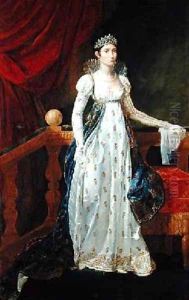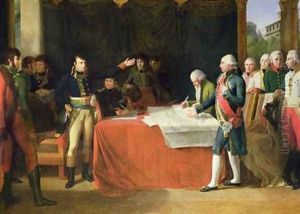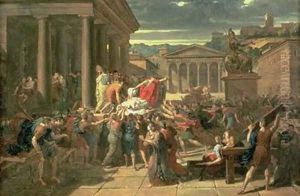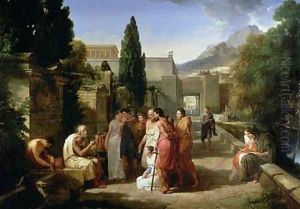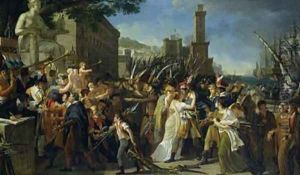Guillaume Guillon Lethiere Paintings
Guillaume Guillon Lethière was a notable French neoclassical painter of historical and allegorical subjects, born in Guadeloupe on January 10, 1760. He was the illegitimate son of a French government official and a local black woman. His mixed-race heritage was a significant factor in his life and career, as he navigated the social and racial barriers of his time. Despite these challenges, Lethière showed exceptional talent for painting from an early age.
In 1774, Lethière moved to France to pursue his education in the arts. He studied under Gabriel-François Doyen and later with Jean-Baptiste Regnault. His burgeoning talent earned him entry into the prestigious Académie Royale de Peinture et de Sculpture. Lethière competed for the Prix de Rome, a scholarship for art students to study at the French Academy in Rome, finally winning it on his third attempt in 1784.
Lethière's time in Rome had a profound influence on his work. He became known for his ability to blend traditional French neoclassical style with the warmth and expressiveness of Italian art. After his return to France, he struggled to gain recognition, partly due to racial prejudice. Nonetheless, he became a respected teacher and in 1818, he was appointed director of the French Academy in Rome, a position he held until 1823.
His most famous painting, 'The Death of Virginia' (1789), reflects his mastery of classical themes and human emotion. Lethière's works are characterized by their dramatic intensity, clear composition, and the use of light and shadow to convey depth and focus. His paintings often dealt with themes of virtue and patriotism, reflecting the revolutionary spirit of the era.
Lethière's legacy is not only his art but also his impact as a teacher. He influenced a generation of artists, including Théodore Géricault. Despite the obstacles he faced, Lethière achieved a level of success that was rare for a person of color in 18th and 19th century Europe. He died in Paris on April 22, 1832. His works continue to be studied and appreciated for their contribution to neoclassical painting.

